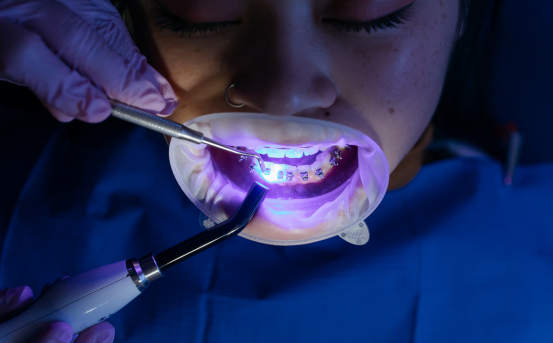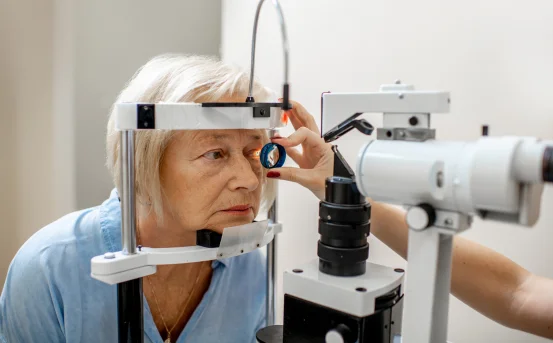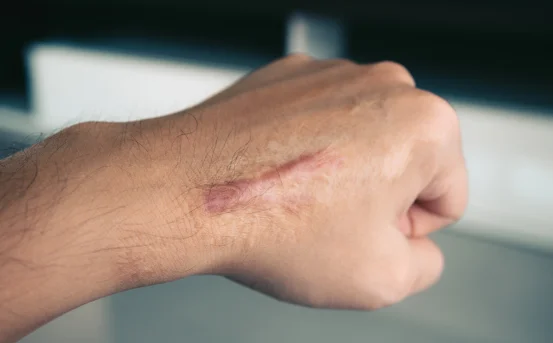Are your gums receding, exposing tooth roots, causing sensitivity, or altering your smile? Gum recession can lead to serious oral health issues if left untreated. Fortunately, gum graft surgery offers a reliable solution. This time-tested periodontal procedure helps restore your gum line, protect your teeth, and enhance your overall dental health.
Gum graft surgery, also known as gingival grafting, is a specialized periodontal procedure designed to reverse the effects of gum recession. By transplanting healthy gum tissue to the affected areas, this surgery helps restore the natural gum line, protects the roots of your teeth, reduces sensitivity, and significantly improves the overall appearance of your smile. It not only enhances aesthetics but also reinforces the gums against further recession, contributing to long-term oral stability and health.
What Is Gum Graft Surgery?
Gum graft surgery, also known as gingival graft surgery, is a dental procedure used to treat gum recession. In this procedure, healthy gum tissue is taken from another part of the mouth (usually the palate) or from donor tissue and is attached to the affected area where the gums have receded.
The primary goals of gum grafting are:
- To cover exposed tooth roots
- To prevent further gum recession
- To reduce tooth sensitivity
- To improve the appearance of your smile
- To protect teeth from decay and bone loss
Why Is Gum Grafting Needed?
Gum recession can occur due to various reasons such as:
- Aggressive tooth brushing
- Periodontal (gum) disease
- Poor oral hygiene
- Genetic predisposition
- Hormonal changes
- Smoking or tobacco use
- Misaligned teeth or bite issues
When gums recede, tooth roots become exposed, making teeth sensitive, unattractive, and more prone to decay. Gum graft surgery not only restores the gumline but also provides a protective barrier around your teeth.
Types of Gum Graft Surgery
There are several types of gum grafts. Your periodontist will determine the most suitable type based on your oral condition:
- Connective Tissue Graft :- This is the most common grafting method. Tissue is taken from the inner layer of the palate and attached to the area with receding gums.
- Free Gingival Graft :- In this method, a thin layer of tissue is taken directly from the roof of the mouth (palate) and transplanted to the target area. It’s often used when patients need to increase the thickness of their gum tissue.
- Pedicle Graft :- This technique uses gum tissue adjacent to the receded area, which is partially cut and rotated to cover the exposed tooth. It is suitable when there is plenty of nearby gum tissue.
- Allograft (Donor Tissue) :- For patients who prefer not to use their own tissue, donor graft material from a tissue bank can be used. This is safe and widely practiced.
Benefits of Trusted Gum Graft Surgery
Choosing a trusted gum graft specialist ensures not only successful results but also a smoother, more comfortable experience. The benefits of gum graft surgery include:
- Improved Gum Health :- Strengthens and stabilizes the gum line.
- Reduced Tooth Sensitivity :- Covers exposed roots that are often very sensitive to hot or cold.
- Enhanced Appearance :- Rebuilds a natural-looking, symmetrical gum line for a more attractive smile.
- Prevention of Further Damage :- Protects tooth roots and underlying bone from decay and erosion.
- Long-Term Stability :- Offers a durable solution that promotes long-term oral health.
The Gum Graft Surgery Procedure: What to Expect
Here’s a step-by-step breakdown of the procedure:
- Initial Consultation :- A periodontist examines your mouth, takes digital images, and assesses the severity of gum recession. They will discuss your medical history and recommend the best type of graft.
- Preparation :- Before surgery, your dentist may advise stopping smoking or adjusting medications. You may also receive a deep cleaning to reduce bacteria.
- Surgery Day :- The area is numbed using local anesthesia. Graft tissue is collected (from your mouth or a donor source). The graft is carefully stitched into the affected area. Protective dressing may be applied.
- Post-Op Instructions :- Your dentist will give detailed aftercare instructions and prescribe antibiotics or pain relief if necessary.
Recovery and Aftercare
Recovery time generally ranges from 1 to 2 weeks depending on the graft type and individual healing speed. Here are tips to ensure smooth healing:
- Avoid brushing or flossing near the graft site until advised
- Eat soft, cool foods (e.g., yogurt, eggs, smoothies, pasta)
- Do not smoke or use straws
- Avoid vigorous physical activity for a few days
- Use prescribed mouthwash or saltwater rinse to reduce infection risk
- Follow up visits are essential for monitoring progress and removing stitches (if not dissolvable)
Discomfort, mild swelling, or minor bleeding are normal and subside within a few days. Always contact your dentist if symptoms persist.
Choosing a Trusted Gum Graft Surgery Provider
To get the best results, it’s important to choose a reputable and experienced dental provider. Here’s what to look for:
- Certified Periodontist :- Ensure your treatment is handled by a specialist, not a general dentist.
- Clinic Reputation: Read online reviews and patient testimonials.
- Before-and-After Photos :- Ask for past patient cases to understand results.
- Hygienic Facility :- Modern equipment, clean environment, and strict sterilization protocols are a must.
- Transparent Pricing :- Get a detailed estimate including consultation, surgery, and follow-up care.
Conclusion
Trusted gum graft surgery is a highly effective treatment for receding gums, protecting teeth from sensitivity, decay, and further gum loss. Whether you’re looking to restore your smile, improve oral health, or prevent future dental complications, a professionally performed gum graft offers long-term benefits.
If you’re noticing signs of gum recession or discomfort while brushing, don’t wait. Consult a certified periodontist and take the first step toward healthier gums and a more confident smile.























